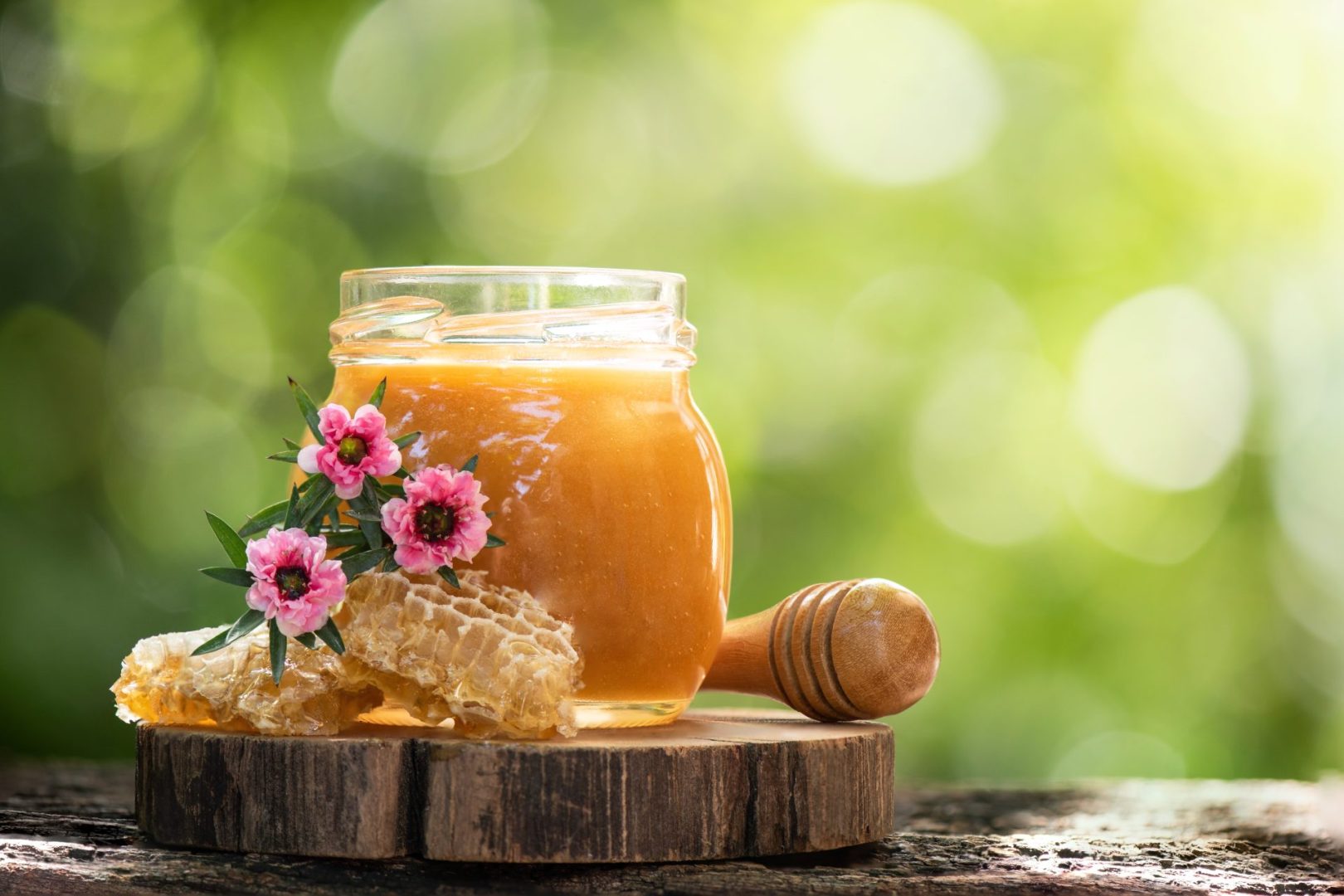Urban beekeepers harvesting honey from city rooftops and vacant lots are discovering something remarkable – their honey contains significantly higher levels of antimicrobial compounds than rural honey, making urban honey a potent natural antibiotic that’s catching the attention of both medical researchers and alternative health practitioners.
This isn’t just folklore or wishful thinking from health food enthusiasts. Laboratory testing is revealing that honey produced by bees foraging in diverse urban environments contains unique combinations of antimicrobial compounds that can fight bacterial infections, including some antibiotic-resistant strains that conventional medicine struggles to treat.
The discovery is revolutionizing our understanding of both urban ecosystems and natural medicine, suggesting that cities – despite their pollution and concrete – might actually be creating conditions that produce some of the most medically valuable honey on Earth.
Urban plant diversity creates medicinal honey cocktails
City bees have access to an incredibly diverse array of flowering plants that doesn’t exist in rural monoculture environments. While rural bees might forage primarily from corn, soybeans, or single-crop orchards, urban bees collect nectar from hundreds of different plant species including ornamental flowers, weeds, trees, and garden plants from around the world.
This botanical diversity translates directly into chemical diversity in the resulting honey. Each plant species contributes unique compounds to the nectar, and when bees collect from dozens or hundreds of different plants, the honey becomes a complex mixture of antimicrobial compounds that work synergistically to fight infections.
Urban gardens, parks, and even weeds growing through sidewalk cracks provide pharmaceutical compounds that rural honey often lacks. Plants like dandelions, clover, linden trees, and ornamental flowers each contribute specific antimicrobial properties that combine to create honey with broad-spectrum antibiotic effects.
The timing of urban plant blooming also creates honey with varying medicinal properties throughout the season. Early spring honey might be rich in tree pollen compounds, while late summer honey incorporates the medicinal properties of flowering weeds and late-blooming ornamentals.
Pollution paradoxically enhances medicinal properties
Surprisingly, the mild stress that urban environments place on plants appears to increase their production of defensive compounds, which then concentrate in the nectar and ultimately in the honey. Plants dealing with urban stressors like air pollution and heat islands produce higher levels of antioxidants and antimicrobial compounds as protective mechanisms.
Research shows that plants growing in moderately polluted urban environments often contain higher concentrations of beneficial secondary metabolites than their rural counterparts. These stress-response compounds end up in the nectar and provide enhanced medicinal properties to urban honey.
The diversity of urban microclimates – from sunny rooftops to shaded courtyards – creates varying stress conditions that trigger different defensive responses in plants, resulting in honey with a broader spectrum of protective compounds than honey from uniform rural environments.
Urban heat islands, while generally considered negative environmental factors, may actually trigger beneficial stress responses in plants that increase the medicinal value of their nectar. This creates an unexpected silver lining to urban environmental challenges.
Laboratory testing reveals powerful antimicrobial activity
Scientific analysis of urban honey samples from cities around the world consistently shows antimicrobial activity against common bacterial pathogens including Staphylococcus aureus, Escherichia coli, and Streptococcus species. Some urban honey samples show activity against antibiotic-resistant bacterial strains that are difficult to treat with conventional medicines.
The antimicrobial mechanisms in urban honey appear to work through multiple pathways, making it difficult for bacteria to develop resistance. While conventional antibiotics typically target single bacterial processes, urban honey contains dozens of compounds that attack bacteria through different mechanisms simultaneously.
Minimum inhibitory concentrations for urban honey against various bacteria are often lower than those required for rural honey, meaning that smaller amounts of urban honey are needed to achieve antimicrobial effects. This enhanced potency makes urban honey particularly valuable for therapeutic applications.
The broad-spectrum activity of urban honey extends beyond bacteria to include antifungal and antiviral properties, making it potentially useful for treating a wider range of infections than single-target pharmaceutical antibiotics.
Wound healing properties exceed expectations
Clinical observations of urban honey used for wound care show healing rates that often exceed those achieved with conventional medical honey or pharmaceutical treatments. The combination of antimicrobial activity, anti-inflammatory effects, and tissue-healing compounds creates optimal conditions for wound recovery.
The osmotic properties of urban honey help draw moisture from bacterial cells while maintaining optimal hydration for healing tissue. This dual action creates an environment that’s hostile to infection while supporting cellular repair processes.
Urban honey’s complex mixture of enzymes, amino acids, and growth factors provides nutrients that support tissue regeneration at the cellular level. These compounds work together to accelerate the healing process while preventing infection complications.
The anti-inflammatory properties of urban honey help reduce the excessive inflammation that can impair wound healing while maintaining the beneficial inflammatory responses needed for proper tissue repair and immune function.
Respiratory benefits emerge from urban foraging patterns
Urban bees foraging from diverse flowering trees and plants produce honey with compounds that provide significant respiratory health benefits. The variety of pollens and nectars collected in urban environments creates honey with natural antihistamine and anti-inflammatory properties that can help with allergies and respiratory conditions.
Local adaptation theory suggests that honey produced from plants in your immediate geographic area may provide specific protection against local allergens and environmental challenges. Urban honey essentially provides immunotherapy against the specific mixture of allergens present in city environments.
The propolis that urban bees collect from tree resins and plant materials in cities contains compounds with proven respiratory benefits, including anti-inflammatory and antimicrobial properties that can help prevent and treat respiratory infections.
Some urban honey contains compounds from medicinal plants that have traditionally been used for respiratory health but are now rare in rural agricultural areas. City gardens and parks often preserve medicinal plant varieties that have been lost from agricultural landscapes.
Rooftop apiaries optimize medicinal honey production
Urban beekeepers are discovering that rooftop locations often produce honey with superior medicinal properties compared to ground-level hives. The elevation allows bees to access tree canopy flowers that ground-level bees might miss, increasing the diversity of compounds in the honey.
Rooftop environments also experience different microclimates that may stress plants in beneficial ways, increasing their production of protective compounds that enhance the medicinal value of their nectar. The heat and wind exposure on rooftops triggers plant responses that concentrate beneficial compounds.
The reduced pesticide exposure that rooftop bees experience compared to rural agricultural bees means that urban honey often contains fewer harmful chemical residues while maintaining higher levels of natural antimicrobial compounds.
Rooftop apiaries can be managed to maximize foraging from specific medicinal plants by strategically planting flowering species known for their antimicrobial properties, essentially creating pharmaceutical gardens that enhance honey’s therapeutic value.
Traditional medicine meets modern science
The antimicrobial properties being discovered in urban honey align with traditional uses of honey in folk medicine systems around the world. Modern laboratory testing is validating many traditional applications while revealing mechanisms of action that weren’t understood by historical practitioners.
Honey has been used medicinally for thousands of years, but the specific compounds responsible for its therapeutic effects are only now being identified and quantified. Urban honey appears to contain many of these traditional medicinal compounds in higher concentrations than rural honey.
The synergistic effects of multiple compounds in urban honey mirror the principles of traditional herbal medicine, where complex plant mixtures are believed to be more effective than isolated compounds. This whole-system approach may explain why urban honey shows superior antimicrobial activity.
Integration of traditional honey uses with modern scientific understanding is leading to new therapeutic applications and dosing protocols that maximize the medicinal benefits while ensuring safety and efficacy.
Quality control ensures medicinal safety
Urban beekeepers producing honey for medicinal purposes are implementing strict quality control measures to ensure their products are safe and effective. This includes testing for heavy metals, pesticides, and other urban contaminants that could compromise the honey’s therapeutic value.
Proper harvesting and processing techniques preserve the delicate compounds that give urban honey its antimicrobial properties. Heat processing and filtration methods must be carefully controlled to maintain therapeutic activity while ensuring food safety.
Documentation of foraging areas and seasonal variations helps beekeepers produce consistent medicinal honey with predictable therapeutic properties. Understanding which plants contribute specific compounds allows for more targeted honey production.
Collaboration with laboratories and medical researchers ensures that urban honey being used therapeutically meets appropriate safety and efficacy standards while maintaining the natural complexity that provides its medicinal benefits.
Regulatory landscape adapts to therapeutic honey
Health authorities are beginning to recognize the therapeutic potential of high-quality urban honey while establishing appropriate regulatory frameworks to ensure safety and efficacy. This regulatory development is crucial for mainstream medical adoption of therapeutic honey applications.
Medical honey standards are being developed that recognize the unique properties of urban honey while ensuring consistent quality and safety for therapeutic use. These standards help distinguish therapeutic honey from regular commercial honey products.
Labeling requirements for medicinal honey are evolving to provide consumers with information about antimicrobial activity, sourcing, and appropriate uses while avoiding inappropriate medical claims for regular honey products.
Healthcare providers are developing protocols for incorporating therapeutic urban honey into treatment plans, particularly for wound care and antibiotic-resistant infections where conventional treatments have limited effectiveness.
Commercial applications expand medical access
Companies specializing in therapeutic honey products are working with urban beekeepers to source high-quality medicinal honey for commercial distribution. This commercialization makes therapeutic urban honey more widely available while supporting urban beekeeping operations.
Medical supply companies are developing standardized urban honey products for hospital and clinic use, particularly for wound care applications where the antimicrobial and healing properties provide significant patient benefits.
Quality testing protocols ensure that commercial therapeutic honey products maintain consistent antimicrobial activity while meeting medical-grade safety standards. This standardization is essential for healthcare adoption and insurance coverage.
Research partnerships between honey producers and medical institutions are developing evidence-based applications for therapeutic urban honey while ensuring that commercial products meet rigorous scientific standards.
The future of urban pharmaceutical farming
Urban beekeeping represents a new model of pharmaceutical production where cities become sources of medicine rather than just consumers of medical products. This paradigm shift has implications for healthcare access, environmental sustainability, and urban planning.
The concept of urban pharmaceutical farming could expand beyond honey to include other bee products like propolis and pollen, each of which contains unique medicinal compounds concentrated from urban plant diversity. This diversification could make urban apiaries even more valuable for therapeutic applications.
Integration of medicinal plant selection in urban landscaping could optimize cities for therapeutic honey production while providing other environmental benefits like air purification and biodiversity support. This approach turns urban green space planning into public health infrastructure.
As antibiotic resistance continues to grow as a global health threat, urban honey and other natural antimicrobials may become increasingly important components of infection treatment protocols, potentially helping to preserve the effectiveness of conventional antibiotics for the most serious cases.
















